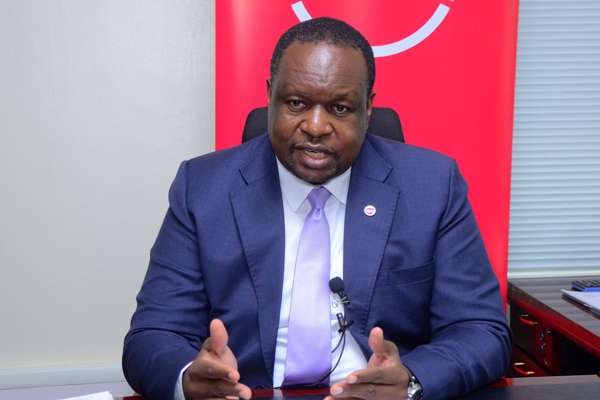Absa loan book grows by 9.6% amid Covid-19

Mr Mumba Kalifungwa
Absa has registered a 9.6 per cent growth in its loan book for the period ended December 2020, signalling an increase in borrowing in a period in which the economy had been dampened by Covid-19.
Speaking during a media roundtable in which the bank also released its financial results in Kampala yesterday, Mr Mumba Kalifungwa, the Absa managing director, said that despite an industry decline in lending, “our gross loan book grew to Shs1.5 trillion maintaining a three- year compounded annual growth rate 9.6 per cent.
The loan book, which grew from Shs1.4 trillion during the same time in 2019, Mr Kalifungwa said, was mainly driven the bank’s commitment to support customer credit needs, noting they had through the period continued to support the economy through facilitating trade, commerce and capital formulation for business growth.
During the period, customer deposits grew by 8.1 per cent to Shs2.4 trillion driven by continued trust in Absa brand and strong position liquidity.
Absa last year completed a transition from Barclays Bank in 12 markets across Africa.
The bank, despite Covid-19 disruptions, Mr Kalifungwa said, has been growing in all sectors but during the period ended December 2020 had seen an increase in loan provisioning an impairment due to the impact of Covid-19 on customers’ ability to meet credit obligations.
During the period, he said, Absa had provided credit relief support to 1,437 customers worth Shs260b whose repayment had been threatened due to reduced incomes and salary cuts.
Absa said loans worth Shs40b for retail customers were restricted compared to Shs220b for corporate and wholesale customers.
In April last year, the Central Bank directed commercial banks to restructure loans, especially for customers whose incomes had been threatened.
During the period, the bank saw revenues grow to Shs316b while profit after tax stood at Shs41b.
Mr Kalifungwa said capital ratio stood at 23 .9 per cent, noting the bank remains well capitalised way above the regulatory requirement of 12 per cent.
However, the bank registered an increase in credit loss ratio to 3.7 per cent from 0.9 per cent in 2019 while non-performing loan rose to Shs234b.




